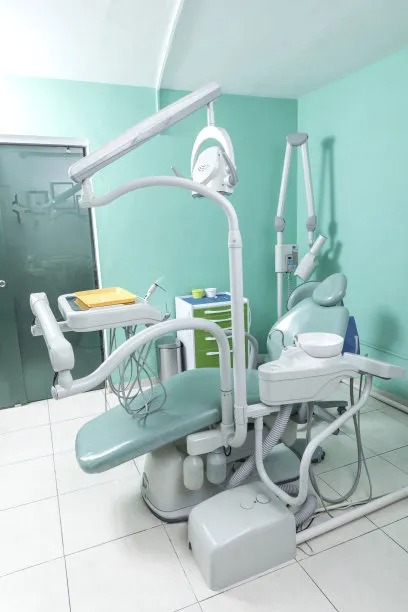Understanding the Process and Importance of Extracting a Tooth for Dental Health and Wellbeing
Summary: Tooth extraction, while often viewed with trepidation, is a significant component of dental health and wellbeing. This article explores the process of tooth extraction, highlighting its importance in various contexts such as dental decay, orthodontic procedures, and preventive measures. We will delve into the reasons behind tooth extractions, the different techniques used, aftercare advice, and the psychological implications for patients. By understanding the necessity and intricacies of this dental procedure, individuals can make informed decisions, ensuring their oral health is prioritized and maintained. This comprehensive look aims to alleviate fears and promote a clearer understanding of tooth extractions role in overall dental care.
1. Reasons for Tooth Extraction and Its Necessity

Tooth extraction is often necessitated by various dental issues, the most prevalent being severe tooth decay. When dental caries penetrate deep into the tooth structure, they can inflict irreversible damage. If left untreated, such decay can lead to infections that pose risks to overall health. In these cases, extraction becomes a crucial measure to protect surrounding teeth and tissues from further harm.
Another reason for tooth extraction is periodontal disease, which can weaken the supporting structures of the teeth. When gums become infected, they can recede and, if untreated, may lead to tooth mobility or loss. In such scenarios, removing the affected teeth can help improve oral hygiene and provide a healthier foundation for remaining teeth.
Orthodontic treatment is yet another circumstance where extraction is warranted. In some cases, teeth may need to be removed to facilitate proper alignment. By creating space in the jaw, orthodontists can ensure that remaining teeth can shift into their correct positions, leading to an improved bite and enhanced aesthetic appearance.
2. The Tooth Extraction Process Explained
The tooth extraction process typically begins with a thorough examination. Dental professionals will assess the affected tooth through X-rays, evaluating the root structure and surrounding bone. Understanding the anatomy of the tooth and its surrounding tissues is essential for determining the extraction method.
There are two primary types of tooth extractions: simple and surgical. A simple extraction is performed on teeth that are visible and can be easily accessed. The dentist administers local anesthesia, loosens the tooth with specialized tools, and gently removes it from its socket.
Surgical extractions, on the other hand, are more complex and may be necessary for teeth that are broken or below the gum line. This procedure often requires oral sedation and the use of a surgical incision to access the tooth. Post-extraction, patients may experience swelling and discomfort, which is generally manageable with prescribed pain relief.
3. Aftercare and Recovery Following Extraction
Proper aftercare following tooth extraction is paramount for promoting healing and preventing complications. Immediately after the procedure, dentists typically advise patients to bite down on gauze to control bleeding. It is crucial to keep the pressure for about 30 minutes to an hour to ensure the formation of a blood clot.
Following the initial recovery, patients should adhere to dental professionals guidelines regarding dietary choices. Soft foods are recommended for the first few days after extraction, and individuals should avoid consuming hot liquids, alcohol, and strenuous exercise to minimize swelling and discomfort.
Patients should also maintain good oral hygiene while being cautious around the extraction site. Gently rinsing with warm salt water can help keep the area clean and promote healing. Monitoring the extraction site for any signs of infection, such as excessive swelling or fever, is vital and warrants a follow-up visit to the dentist if experienced.
4. Psychological Aspects of Tooth Extraction
Tooth extraction can elicit a range of emotions, from anxiety to relief, depending on an individuals circumstances. Many patients may feel anxious about both the procedure and pain management. Understanding the necessity of the extraction and the expertise of dental professionals can help alleviate some of these fears.
Moreover, the emotional implications of losing a tooth can be significant. Individuals may feel self-conscious about their smile or fear the social repercussions of undergoing an extraction. Dental professionals emphasize the importance of addressing these concerns, informing patients of potential replacements, such as implants or bridges, that can restore aesthetic appearance and function.
Supporting the emotional wellbeing of patients is crucial. Engaging in open dialogue with one’s dentist about feelings of anxiety or concern can pave the way for a more positive experience, ensuring individuals feel fully supported throughout the process.
Summary:
In conclusion, understanding the process and importance of tooth extraction is vital for maintaining optimal dental health. From recognizing the necessity of extraction to appreciating the processes involved and coping mechanisms available, the procedure serves critical functions that enhance individuals wellbeing. Such knowledge empowers patients, enabling them to embrace necessary dental interventions without fear.
This article is compiled by Vickong Dental and the content is for reference only.


